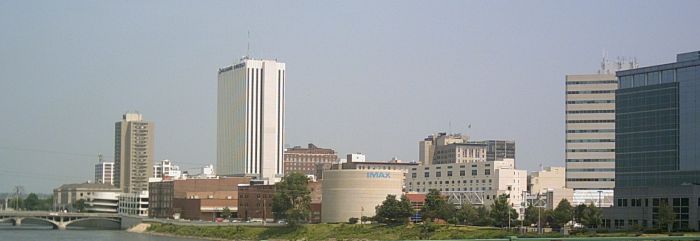
Moving to Cedar Rapids, Iowa: A Comprehensive Relocation Guide
Considering moving to Cedar Rapids, Iowa? This thriving Eastern Iowa city offers diverse economy, cultural amenities, and affordable living. With approximately 135,000 residents in 2025 (metro 275,000+), Cedar Rapids combines manufacturing heritage with arts culture and Iowa’s second-largest city character.
Demographic Profile to Consider If Moving to Cedar Rapids:
Cedar Rapids’ 2025 population is approximately 135,000 residents, making it Iowa’s second-largest city, with the metro exceeding 275,000 in Linn County. The median age is around 37 years, with working families, professionals, and diverse residents. The population is approximately 87% White, 6% Black or African American, 4% Hispanic, 2% Asian. Cedar Rapids features Czech heritage influences (Czech Village neighborhood), downtown along the Cedar River, NewBo District (arts district), and serves as Eastern Iowa’s economic hub. The city attracts working families, professionals seeking affordability, and those wanting Iowa’s second city with cultural offerings. Cedar Rapids appeals to working-class to middle-class residents prioritizing value and career opportunities. The community balances manufacturing heritage with arts culture and rebuilding from 2008 flood impacts. Find trusted local services for moving, living, and working in Cedar Rapids.Cedar Rapids Relocation Directory
Cost of Living to Consider If Moving to Cedar Rapids:
Cedar Rapids offers exceptional affordability for a city its size. Median home values range from $180,000 to $260,000 in 2025, among Iowa’s most affordable while providing city amenities and employment. The median household income is approximately $63,000. Rental properties average $900 to $1,400 monthly. Iowa has no state income tax on retirement income; individual income tax is progressive 0.33%-8.53%. Property taxes are moderate. Overall cost of living is very low for the career opportunities and amenities, making Cedar Rapids highly attractive for working families, young professionals, and those seeking Iowa affordability with city living. The city provides tremendous value with stable manufacturing employment and cultural offerings. Housing costs create exceptional accessibility for diverse income levels.
Economy and Job Market:
Cedar Rapids’ economy is diverse including manufacturing, food processing, healthcare, and technology. Major employers include Collins Aerospace (major aviation manufacturing), General Mills, Quaker Oats, Cargill, Rockwell Collins, Transamerica, Cedar Rapids-based companies, hospitals including Mercy Medical Center and UnityPoint Health-St. Luke’s Hospital, and various manufacturers. The city maintains strong manufacturing base with aerospace and food processing. Typical industries include manufacturing, healthcare, food processing, technology, and services. The diverse economy provides stability and opportunities. Wages reflect working-class to middle-class Midwest levels. The job market attracts manufacturing workers, engineers, and professionals seeking career opportunity with affordability.
Education:
Cedar Rapids Community School District serves city students with multiple high schools including Washington, Jefferson, Kennedy, and Metro. School quality varies requiring family research. Coe College, Mount Mercy University, and Kirkwood Community College provide higher education. The educational infrastructure serves the large, diverse population with quality varying by school and neighborhood.
Recreation and Lifestyle:
Cedar Rapids offers NewBo City Market (public market and gathering space), Czech Village preserving heritage with shops and restaurants, downtown along the Cedar River with riverfront trails, and the National Czech & Slovak Museum & Library. Residents enjoy Paramount Theatre, Theatre Cedar Rapids, Cedar Rapids Museum of Art, and Brucemore (historic mansion and estate). The city hosts strong youth sports culture and Kernels minor league baseball. The lifestyle emphasizes affordable family living, Czech heritage, arts culture, and outdoor recreation along the Cedar River. The four-season Iowa climate enables varied activities. The community values Czech heritage, arts culture, manufacturing pride, and recovery/resilience following the devastating 2008 flood. Living in Cedar Rapids means accepting Iowa’s second-city character, working-class atmosphere, and some neighborhoods still recovering while enjoying exceptional affordability, stable manufacturing employment, NewBo District arts scene, and Czech Village heritage creating Iowa’s most diverse mid-sized city with manufacturing meeting culture.
Healthcare and Services:
Cedar Rapids residents access comprehensive healthcare through Mercy Medical Center, UnityPoint Health-St. Luke’s Hospital, and facilities throughout the city. The concentration of hospitals serves as Eastern Iowa’s healthcare hub with quality medical care.
Transportation:
Cedar Rapids is accessed via Interstate 380, U.S. Route 30, U.S. Route 151, and various corridors at Eastern Iowa crossroads. The Eastern Iowa Airport provides commercial service with good connectivity. Cedar Rapids Transit operates bus service. Most residents use personal vehicles. Typical travel times to Des Moines are 2 hours, to Iowa City 30 minutes.
Conclusion:
Moving to Cedar Rapids in 2025 offers affordable Iowa city living with diverse economy, Czech heritage, and arts culture. The city’s combination of exceptionally low housing costs, manufacturing employment, and NewBo District makes it ideal for working families, young professionals, and those seeking Iowa’s second city where manufacturing heritage meets Czech Village charm and exceptional affordability defines Eastern Iowa’s economic and cultural hub.

